As summer approaches, many outdoor enthusiasts eagerly anticipate the opportunity to explore nature’s beauty through hiking. The right attire can significantly enhance your experience in the great outdoors. When choosing clothing for hiking, one essential item stands out: hiking pants for women. These versatile garments provide comfort, protection, and style while allowing for easy movement on diverse terrains. In this article, we will explore various aspects of hiking pants for women, including the best styles, features to look for, outfit combinations, and how to choose the perfect pair for summer adventures.
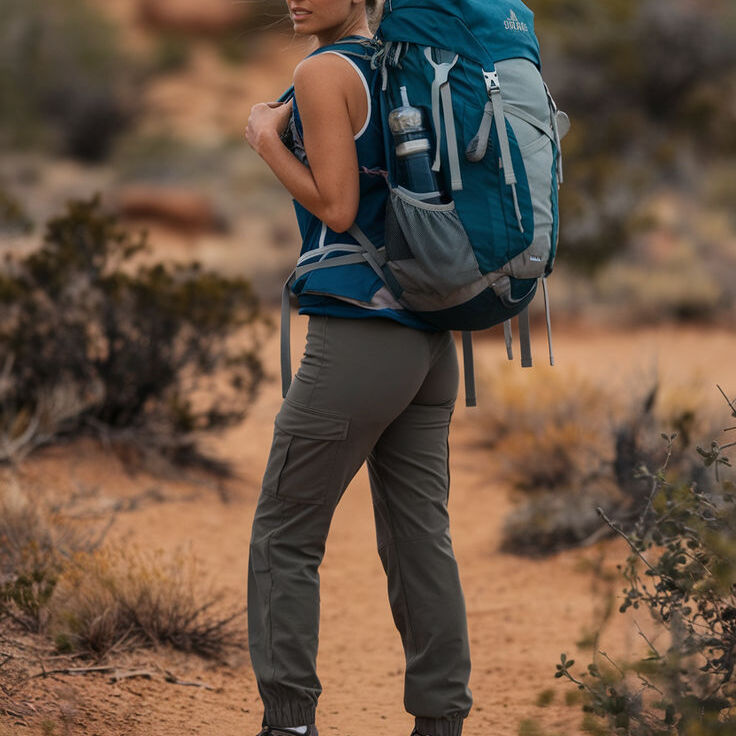
Understanding Hiking Pants
What Are Hiking Pants?
Hiking pants are specially designed trousers that provide comfort and functionality for outdoor activities, particularly hiking. Unlike regular pants, hiking pants are made with durable, lightweight, and moisture-wicking materials. These features ensure that hikers stay comfortable and dry, even during strenuous activities.
Types of Hiking Pants for Women
When it comes to hiking pants for women, various styles cater to different needs and preferences:
- Convertible Pants: These are versatile options that can be transformed into shorts by zipping off the legs. Convertible pants are perfect for fluctuating temperatures and allow for easy adaptation during a hike.
- Capri Pants: Ideal for warmer weather, capris offer more coverage than shorts but provide breathability. They fall mid-calf and are a favorite among hikers who prefer shorter pant lengths.
- Full-Length Pants: Traditional full-length hiking pants provide maximum protection against elements like sun, insects, and rough vegetation. They are suitable for diverse hiking conditions and offer good coverage.
- Shorts: While not technically pants, hiking shorts are an excellent option for hot summer days. Lightweight, breathable shorts offer freedom of movement and keep you cool during rigorous hikes.
Key Features to Look for in Hiking Pants
When selecting hiking pants for women, it’s essential to consider various features that enhance performance and comfort. Here are some key aspects to look for:
1. Material
The fabric of hiking pants significantly impacts their performance. Look for materials that are lightweight, durable, and moisture-wicking. Common materials for hiking pants include nylon, polyester, and spandex blends. These fabrics allow for breathability, quick drying, and UV protection.
2. Fit and Comfort
Finding the right fit is crucial for a successful hike. Look for pants that provide a snug but comfortable fit without being restrictive. Many hiking pants are designed with an adjustable waistband or belt loops to ensure a custom fit.
3. Flexibility and Mobility
Active pursuits like hiking require pants that allow for a wide range of motion. Select hiking pants that feature a stretch fabric or articulated knees to enhance flexibility and enable easy movement over various terrains.
4. Pockets
Having adequate pocket space is essential for convenience on the trail. Look for hiking pants that feature multiple pockets, including zippered pockets to secure small items like keys, maps, or snacks.
5. Weather Resistance
Consider the hiking conditions you may encounter. If you plan on hiking in varied weather, look for pants that offer water resistance or quick-drying capabilities. Some pants even include water-repellent coatings to keep you dry during unexpected showers.
6. Breathability
On warm summer days, breathability is essential to prevent overheating. Look for pants with ventilation features like mesh panels or zippered vents to enhance airflow.
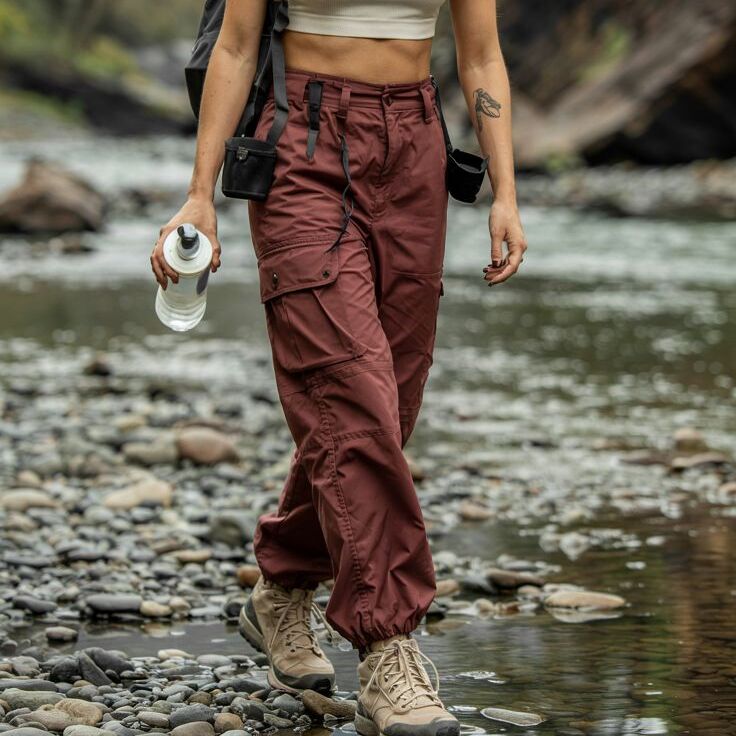
Outfit Ideas: What to Wear with Hiking Pants for Women in Summer
1. Casual Day Hike
For a relaxed day hike, comfort is key.
- Top: Pair your hiking pants with a moisture-wicking t-shirt made from breathable fabric. Light colors can help reflect heat, keeping you cool.
- Footwear: Opt for comfortable hiking shoes or trail runners that offer good traction and support. Choose shoes that fit well and are broken in to avoid blisters.
- Accessories: A lightweight hat provides sun protection, while a backpack can hold essentials like water, snacks, and a first-aid kit. Consider sunglasses with UV protection to shield your eyes from the sun.
2. Hiking in the Heat
When hiking in hotter conditions, opting for light and breathable clothing is crucial.
- Top: Choose a lightweight, sleeveless or short-sleeve shirt made from moisture-wicking fabric. Loose-fitting tops can help keep you cooler.
- Footwear: Open footwear like sandals may be appropriate for short, easy hikes, but consider closed shoes with good support for longer trips.
- Accessories: Bring a hydration pack or water bottle to ensure you stay hydrated. A cooling towel can also help when the temperatures rise.
3. Preparing for a Rainy Hike
For rainy summer hikes, it’s important to choose water-resistant options.
- Top: Layer your hiking pants with a moisture-wicking long-sleeve shirt, and consider a lightweight, waterproof jacket to keep dry.
- Footwear: Waterproof hiking boots or shoes can protect your feet from mud and water.
- Accessories: Pack a small umbrella or a poncho for additional protection from heavy rain, and ensure that your gear is stored in waterproof bags to keep everything dry.
4. Evening Hikes
For evening hikes when temperatures may drop, layering is important.
- Top: Start with a moisture-wicking base layer and add a lightweight fleece or jacket as temperatures cool.
- Footwear: Wear sturdy hiking shoes that offer stability and comfort, as you may be hiking on uneven terrain in the dark.
- Accessories: A headlamp is crucial for visibility, while a light scarf or neck gaiter can keep you warm. Also, consider carrying a compact emergency blanket for added warmth if necessary.
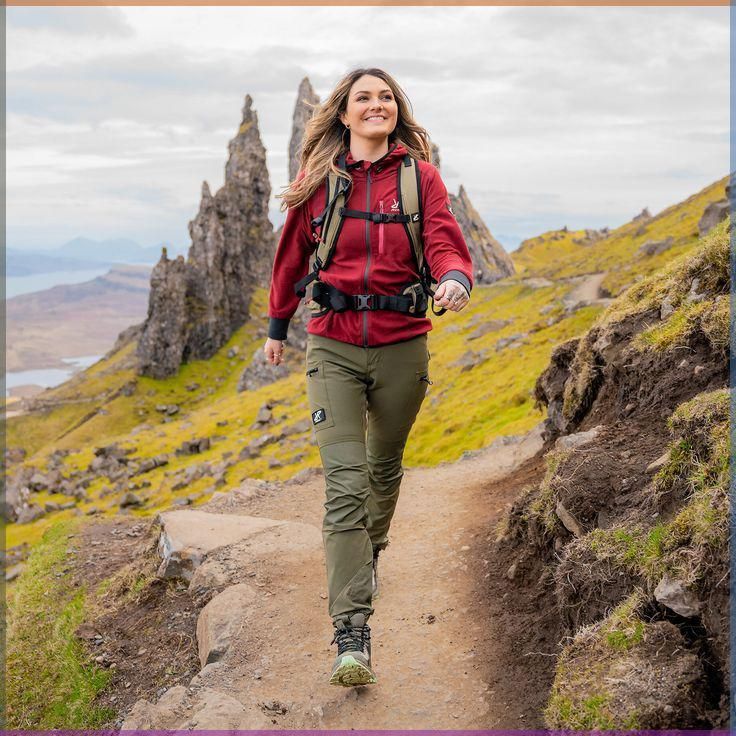
Choosing the Perfect Hiking Pants
Selecting the ideal pair of hiking pants involves weighing your personal style, comfort, and hiking preferences. Here are some tips to help you find your perfect match:
1. Try Before You Buy
Always try on hiking pants before making a purchase. Move around, bend, and squats to ensure that the fit allows for comfortable movement.
2. Assess the Intended Use
Consider the type of hiking you’ll be doing. If you plan on long, rigorous hikes, opt for pants with more features and durability. For casual day hikes or shorter excursions, a simpler style may suffice.
3. Read Reviews
Before purchasing, read reviews from other women who have used the pants you are considering. This will provide insights into the fit, comfort, and performance of the product.
4. Check for the Right Size
Sizing can vary between brands, so be sure to check the sizing charts provided by each manufacturer. When in doubt, remember that a relaxed fit can be more comfortable during prolonged wear.
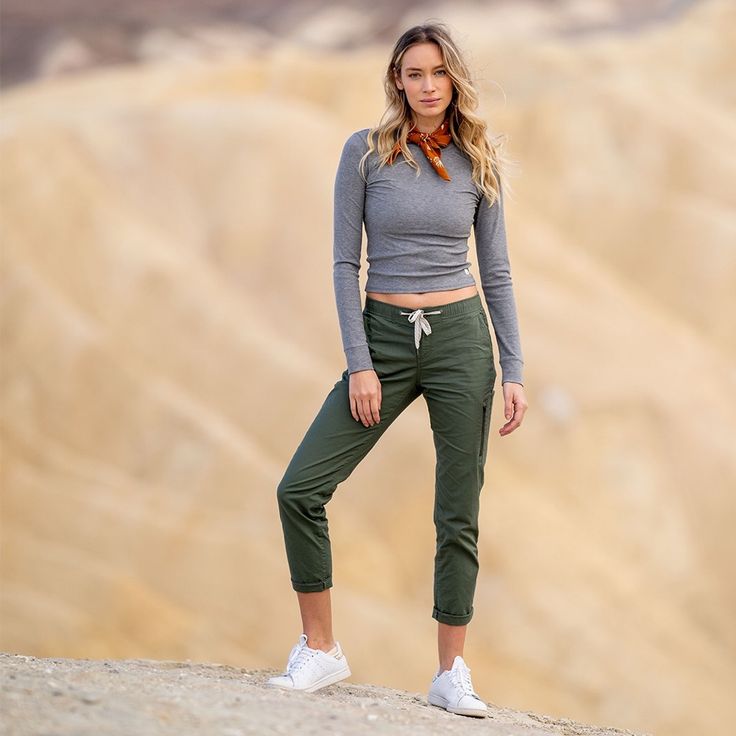
Accessorizing for Comfort and Safety
When hiking, the right accessories can make a significant difference in comfort and safety. Here are some additional items to consider:
1. Hydration
Staying hydrated is crucial, especially during summer hikes. Invest in a good-quality water bottle or a hydration system that is easily accessible while hiking.
2. Sun Protection
In addition to wearing a hat and sunglasses, consider applying sunscreen to any exposed skin. A sweat-resistant, broad-spectrum sunscreen will protect you from harmful UV rays.
A map, compass, or GPS device can help you stay oriented during hikes. Familiarize yourself with the basics of navigation before embarking on your adventure.
4. First Aid Kit
A small first aid kit is essential for addressing minor injuries that may occur during a hike. Ensure your kit includes adhesive bandages, antiseptic wipes, and any necessary medications.
Cultural Significance of Hiking
Hiking has historically been viewed as an activity of exploration and connection to nature.
Community Building
Hiking often brings people together, creating a sense of community among hikers. Groups like hiking clubs or meetups foster friendship and shared experiences. Many women have found empowerment through hiking, embracing the outdoor space and establishing solidarity with others who share similar passions for nature.
Environmental Awareness
Adventure enthusiasts are often more attuned to the environment and the importance of preserving natural spaces. Hiking encourages eco-consciousness as individuals experience nature firsthand, leading to advocacy for conservation efforts.
Mental and Physical Health Benefits
Hiking offers numerous mental and physical health benefits. Engaging with nature is linked to reduced stress, improved mood, and increased physical fitness. Hiking builds strength, endurance, and flexibility, making hiking pants essential for helping women embrace these activities comfortably.
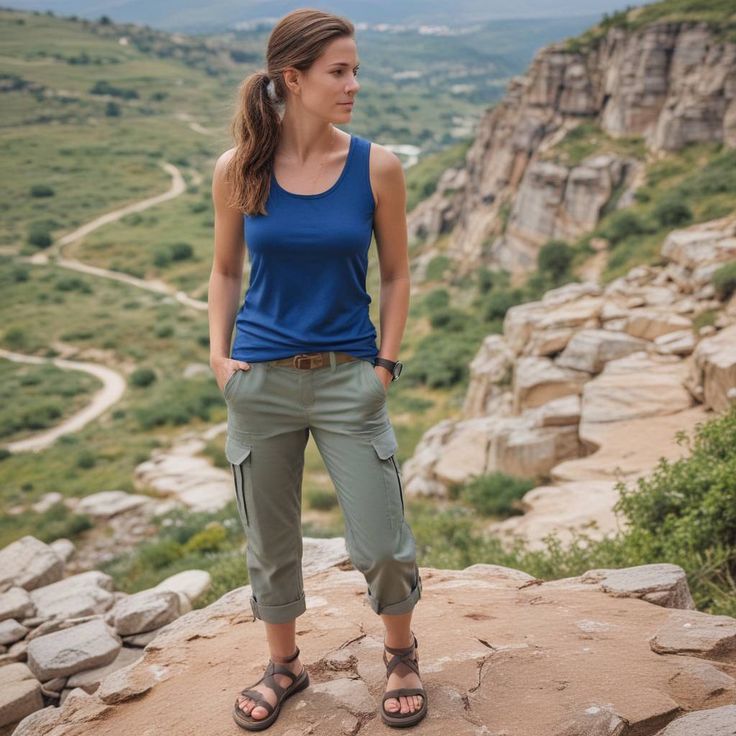
Caring for Your Hiking Pants
To ensure the longevity of your hiking pants, proper care is essential.
Washing
Follow the tag instructions for washing. Most synthetic materials can be machine washed in cold water. Avoid fabric softeners, as they can diminish moisture-wicking qualities.
Drying
Air-drying is often the best option for hiking pants. If you must use a dryer, select a low-heat setting to prevent shrinking or damaging the material.
Store Properly
Store your hiking pants in a cool, dry place. Avoid damp locations that may lead to mold or mildew growth on attire. If storing for an extended period, ensure they are fully cleaned and dried beforehand.
Conclusion
Hiking pants for women are a vital part of outdoor adventures, offering comfort, protection, and style during summer explorations. With the right features, fit, and materials, these pants make it easy to navigate different terrains while enjoying nature’s beauty. By choosing the right top layers, footwear, and accessories, you can complete your outdoor ensemble for any hiking occasion.
As you embark on your next hiking adventure, remember to embrace the freedom that comes with styling hiking pants. The versatility of these garments allows you to express your personal style while staying functional. Happy trails!

